What is cause and effect of greensnap? Tune in to hear from Phil Long!#AsktheAgronomist
-
Latham Hi‑Tech Seeds
#AskTheAgronomist: Greensnap & Root Lodging
 0:15 – Updated Across Latham® Country1:25 – Why does greensnap happen?3:30 – Growth regulator herbicides & the relation to greensnap4:20 – Root lodging yield loss6:15 – Location of corn stalk snap & yield loss9:35 – Select the appropriate plant characteristics10:50 – Disease potential
0:15 – Updated Across Latham® Country1:25 – Why does greensnap happen?3:30 – Growth regulator herbicides & the relation to greensnap4:20 – Root lodging yield loss6:15 – Location of corn stalk snap & yield loss9:35 – Select the appropriate plant characteristics10:50 – Disease potential -
Latham Hi‑Tech Seeds
The Cause & Effect of Greensnap
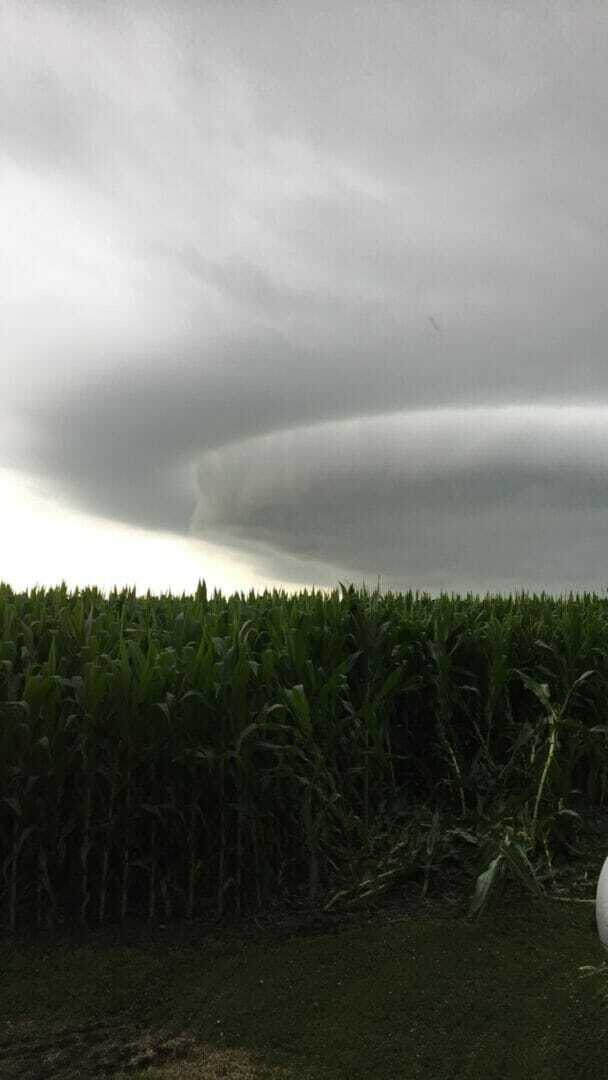
Greensnap can occur during two of the most rapid vegetative growth stages of corn from V5 to V8 and from V12 to R1. During a corn’s rapid growth stage, internodes elongate and become susceptible to breaking off. From V12 to R1, a corn plant can grow up to 4 inches per day!
When greensnap occurs, it happens at the primary ear node which is detrimental to corn yield in the fall. Aside from high winds, other factors can include planting conditions, farm management practices and genetics of the corn plant.
When corn plants are in their first stage of rapid growth from V5 to V8, post-emergence herbicide is often applied. Growth-regulator herbicides can play a negative role in the integrity of the plant structure for short time after application. This combined with rapid plant growth weakens plant structure leaving it susceptible to greensnap.
Here are three suggestions to manage for greensnap in future crop years:
- Choose hybrids that have strong plant characteristics. We suggest selecting hybrids with above average root strength, stalk strength and disease resistance.
- Take a second look at your herbicide management plan, specifically time of application or reduction of growth regulator herbicides.
- Set your corn crop up for success from the beginning of the season by planting into a favorable seed bed at the appropriate seed depth. Give the seed a chance to establish a strong nodal root system to help withstand harsh weather through the growing season.
If you have questions on selecting the right hybrid for your field, let us know. We can connect you with one of our product specialists to ensure the right seed is placed on the right acre. This is the first step you can do to protect your corn crop from greensnap.
-
Latham Hi‑Tech Seeds
Early Season Fungicides
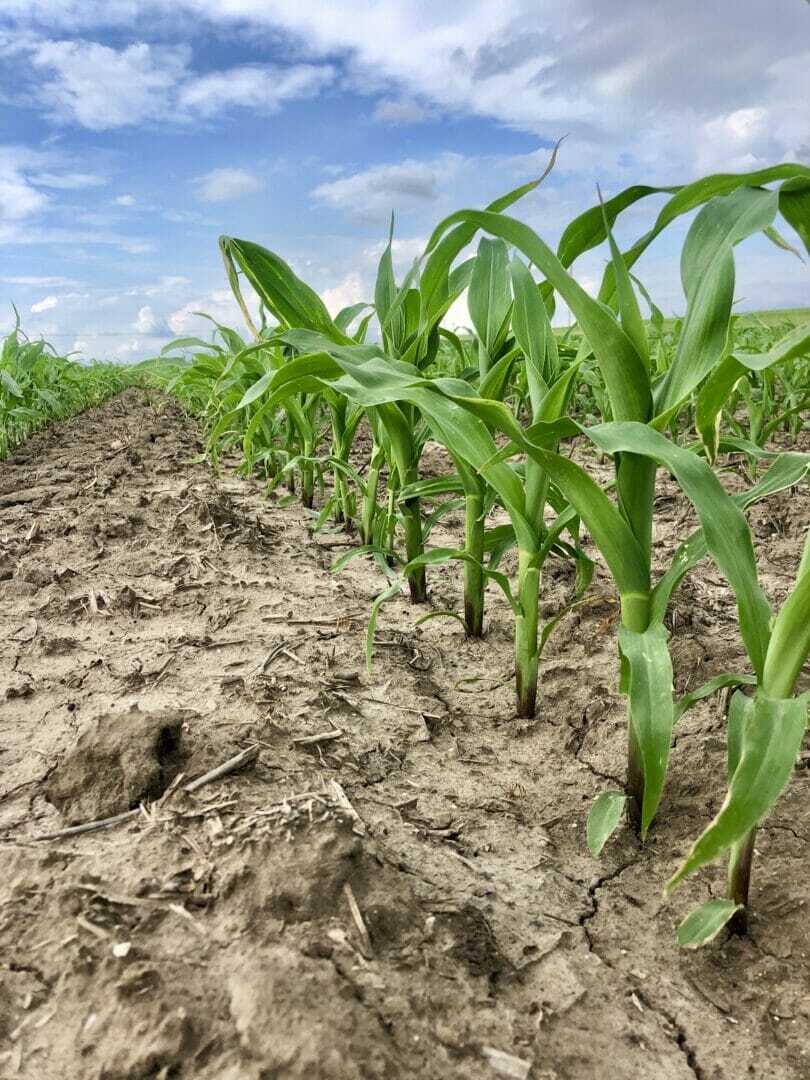
This year we have seen slow early growth, reduced tillage, persistent rain and heavy storms. We have also seen an increase in corn-on-corn acres and other agronomic challenges. All these problems can add up to more inoculum in the field and poor overall health leaving plants more susceptible to infection. The early season diseases we think about with corn are typically Anthracnose and seedling diseases (V2-V8); however, Gray Leaf Spot, Northern Corn Leaf Blight, Goss’s Wilt, Southern Rust and Tar Spot can all show early foliar symptoms (V8-R4). Its important to note that bacterial diseases like Goss’s can’t be controlled with a fungicide.
There is very little economic support for early season fungicide application. Depending on the individual fungicide, you may see protection against disease for anywhere from 7 to 21 days. Be sure to check the label for specifics on how long they retain efficacy on the crop. If your focus is on Anthracnose, you may stave off the leaf blight phase of the disease, but this doesn’t mean that the stalk rot phase of the disease won’t infect the plant late season.
It’s also important to remember that coverage is critical with fungicides. This not only means good coverage during your spray operation with correction nozzles, pressure and volume, but it also means that if you spray early in the season, your corn will grow a new leaf approximately every 3-5 days with average GDUs. That new tissue is not protected because fungicides are not very mobile in the plant.
When to Spray?
The best bang for your buck is still going to be around VT to R2 time period because you will be able to suppress diseases that may be present on the leaves and protect them for a few weeks of any diseases trying to get into the plant. Corn is also done putting on new leaves at this point. Typically a 5-8 bu/A yield increase will pay for the investment depending on grain price and application costs. If you are facing heavy disease pressure, be sure to select the right fungicide for the diseases you have. Fungicides with dual modes of action in the Group 3 (Triazoles) and 11 (QoI) will provide suppression and some lasting protection. Look for the active ingredients that end in “ole” (Triozoles) and “in” (QoI).
If you’re facing the fungicide decision to protect valuable yield in a tough year scout your fields for disease. If you don’t see any issues now, then skip an early application and focus on tassel. Take a look at the susceptibility of that hybrid to the disease you are seeing and then evaluate the weather outlook and if you’re in a corn-on-corn or reduced tillage situation. Lastly, monitor fields closely that had Tar Spot last season
It has been an interesting year with all the weather components we have had to face. If you have any questions, don’t hesitate to call in to the Latham Office.
-
Latham Hi‑Tech Seeds
Uneven Corn Stands
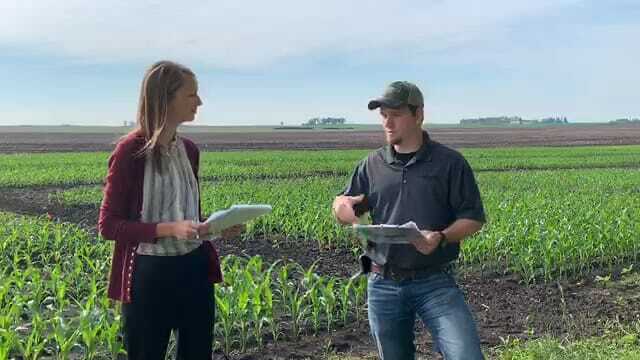 Uneven corn stands? Tune in to hear what to watch for next from Phil Long! #AskTheAgronomist0:15 — Recap of the growing season1:10 — #Plant19 Challenges2:36 — Issues with emerging corn: damping off, herbicide damage, ponding or crusting4:40 — Yield Repercussions6:30 — Managing uneven corn stands
Uneven corn stands? Tune in to hear what to watch for next from Phil Long! #AskTheAgronomist0:15 — Recap of the growing season1:10 — #Plant19 Challenges2:36 — Issues with emerging corn: damping off, herbicide damage, ponding or crusting4:40 — Yield Repercussions6:30 — Managing uneven corn stands -
Latham Hi‑Tech Seeds
#AskTheAgronomist: What’s the Right Nitrogen Application Rate?

Join us this morning as we discuss the final “R” in our nitrogen application series! #AskTheAgronomist
https://www.facebook.com/LathamSeeds/videos/320955165207264?sfns=mo
-
Latham Hi‑Tech Seeds
Nitrogen Deficiency in Corn
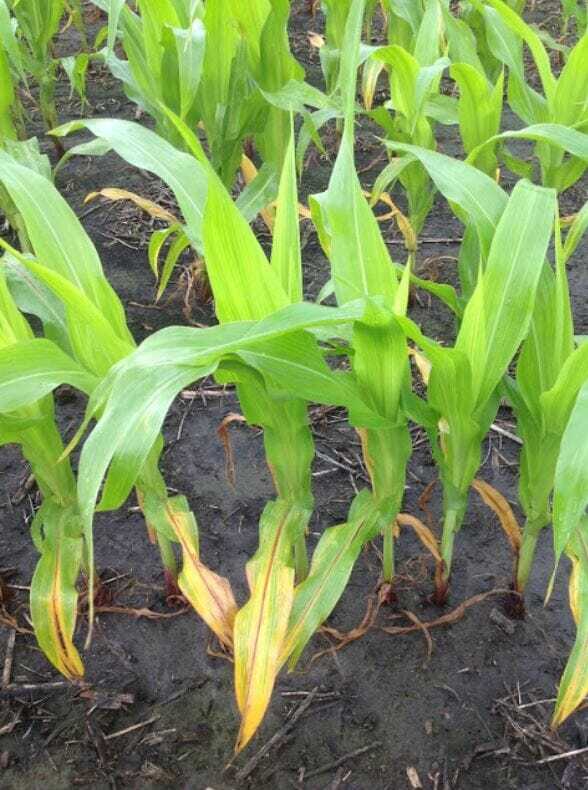
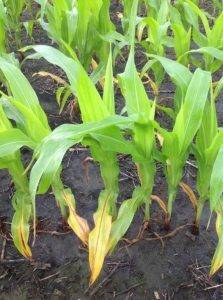
Photo credit: University of Minnesota Extension Nitrogen is an essential nutrient and its depletion can lead to severe yield loss. Nitrogen deficiency can be difficult to spot as different hybrids exhibit different symptoms. Most corn plants deficient in nitrogen will exhibit pale-yellowish leaves with a spindled appearance.
Nitrogen is a mobile nutrient and moves to the newest leaves first, leaving the oldest leaves more susceptible to deficiency. By moving from the oldest to youngest leaves, signs of yellowing will often form a “V” pattern on the plant leaf.
Causes of Nitrogen Deficiency
Cold or saturated soils are the primary causes of nitrogen deficiency in corn. Periods of heavy rainfall increase nitrogen leaching, depleting saturated soils of the vital nutrient. Aside from soil leaching, nitrogen can be lost through denitrification – where the nutrient is converted to a gas form and lost in the atmosphere.
When soil conditions are dry, sandy or poorly fertilized, early-applied nitrogen fails to be absorbed by plants. Insect diseases that injure root systems can further prevent proper absorption of nitrogen and lead to deficiency.
Other unavoidable circumstances happen later in the growing season when the increase in plant height and density can block sunlight absorption and reduce photosynthesis. This leads corn to use nutrient reserves within the plant, which will weaken stalks.
Implications
60% of the nitrogen needed to support corn growth is built-up between V4 and pollination, making this an important time to monitor for deficiency. Scouting for nitrogen deficiency should also take place after episodes of heavy rainfall.
While having negative implications on yield potential and crop quality, nitrogen deficiency can also contribute to other corn disorders including tip-dieback and kernel abortion. Plants that are nitrogen deficient will cannibalize their stalks to compensate for the nutrient loss. This makes stalks more vulnerable to lodging and pinching.
Management Options
Tissue sampling can provide insight into how severe deficiency is. When testing for nitrogen deficiency in corn, gather samples from different areas of the field to compare nitrogen levels in deficient corn with healthy plants.
Nitrogen deficient corn should be harvested early in order to prevent additional yield loss from stalk lodging. When planning for next year’s crop, avoid planting hybrids with a history of poor nitrogen uptake. Some hybrids also demand a higher level of nitrogen during grain fill than others, so it is important to consider when planning for the next crop.
Be sure to consult with your local Latham representative to determine the best plan for managing nitrogen deficiency in corn.
-
Latham Hi‑Tech Seeds
What is the Best Time for Nitrogen Application?

Join us as we discuss the best nitrogen practices in regards to timeliness of application. #AskTheAgronomist
https://www.facebook.com/LathamSeeds/videos/2672172469767767?sfns=mo

Source: Iowa State University Extension -
Latham Hi‑Tech Seeds
#AsktheAgronomist: Saving Soybean Yield
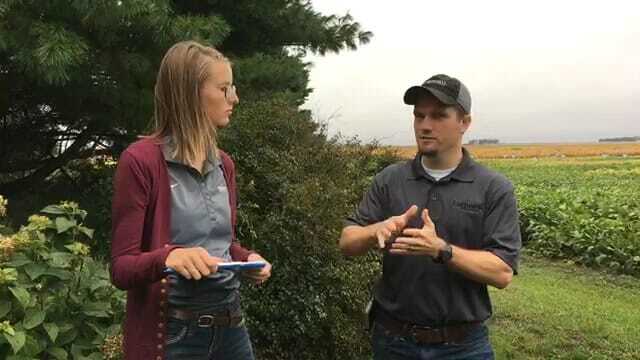
Today we will be covering soybean harvest! Tune in for in-field tips. #AsktheAgronomist
Video Link: https://www.facebook.com/LathamSeeds/videos/1892500697529870/
-
Latham Hi‑Tech Seeds
FB Live: Dissecting a Corn Plant
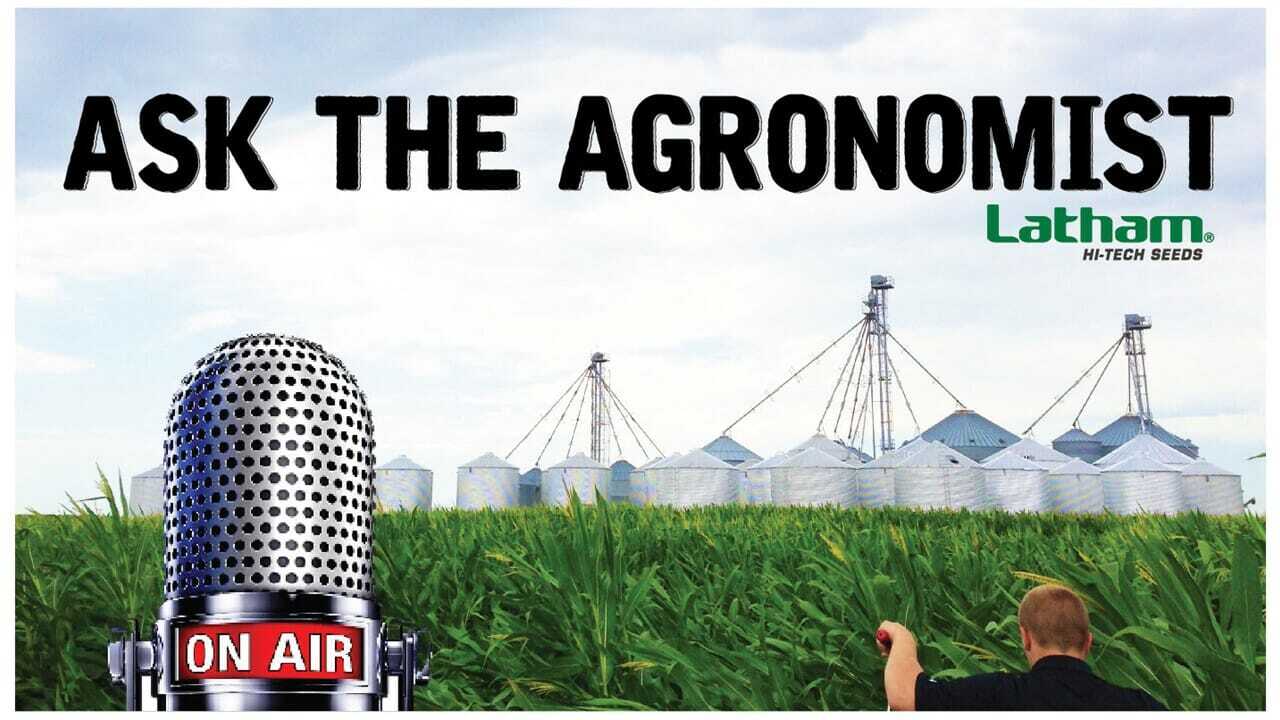
Tune in as we dissect a corn plant at its current stage on Ask the Agronomist!
FB Live Video: https://www.facebook.com/LathamSeeds/videos/10156497920517138/
-
Latham Hi‑Tech Seeds
Quick Tips for Assessing Soybean Stands
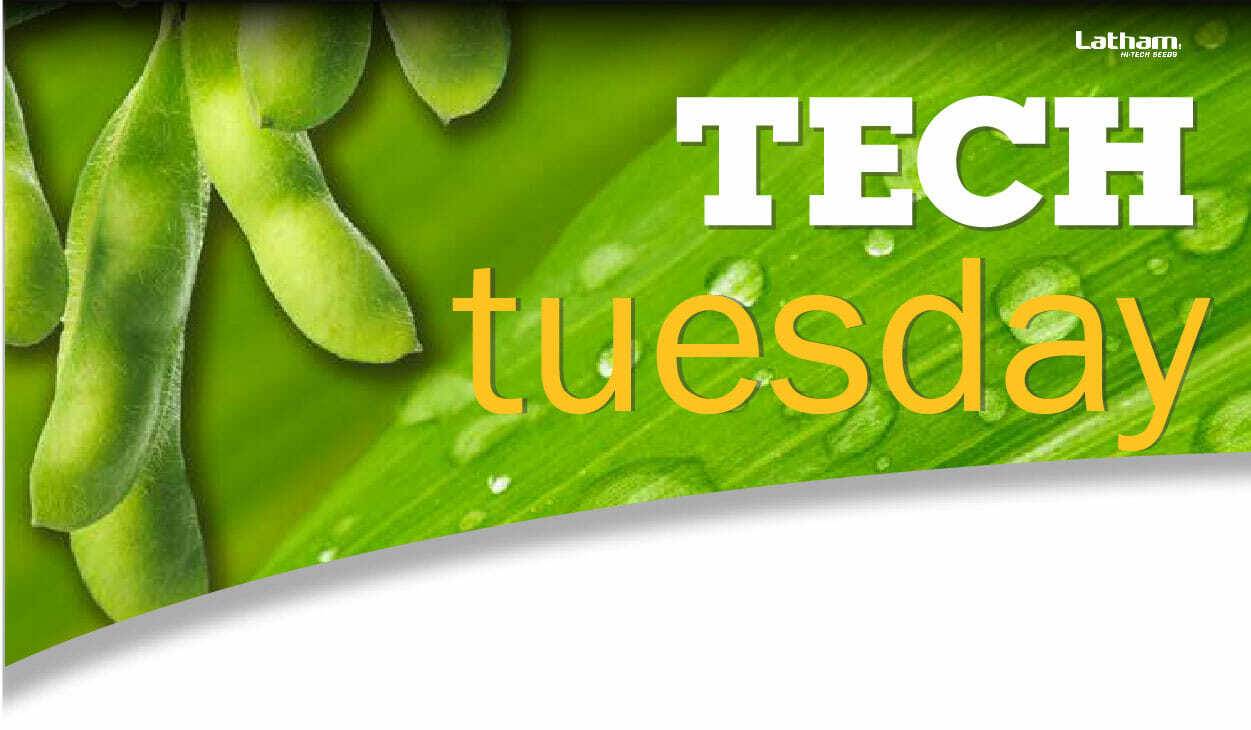
The spring of 2018 will be remembered for too much rain and cold temperatures, which all contributed to one of the most challenging planting seasons in recent history. Farmers were concerned about getting their seed in the ground early enough to capture full yield potential, but one must take more than planting date into consideration. Soil conditions at the time of planting and the short-term weather forecast also play an important role in germination and emergence, as many were reminded when they saw poor emergence and weak stands.
With this in mind, the following guidelines will help you evaluate soybean stands and determine whether re-planting is necessary:
» PLANTING DATE: In a five-year study completed by Latham’s research team across multiple states, there was no significant yield difference between soybeans planted before May 15. We evaluated planting dates of late April and early May to mid-May. Planting on or before June 1 averaged 95% of expected yield. In fact, yields didn’t drop to the 85% and lower range until soybeans were planted after June 15. These results compare very closely to similar studies done by university researchers throughout our trade territory.
» PLANT POPULATION: Soybean stands can suffer from a wide variety of problems that will reduce population: hail, disease, insects, cold soil temps at planting time, compaction and planter failures. The biggest problem we find is that stand reductions almost never occur evenly across the field, so farmers must be diligent in scouting their fields and take the necessary time to evaluate their stands properly.
I recommend taking 10 stand counts in the area with the worst damage and 10 counts in the part of the field that was not affected or affected just slightly. At each point, measure off 10 feet of row and count the number of live, viable plants. You can take the average of your 10 points and compare them to the table on Page 3 to see how many plants per acre you have remaining.
A stand of 100,000 evenly distributed plants generally gives you optimum yield. Remember that as the growing season progresses, it is much more difficult to establish a good stand of soybeans. This means you might be better off leaving a stand of 75,000 plants on July 1 rather than trying to establish a new population. A stand of 75,000 on May 15, however, seems very inadequate and would warrant replanting.
Evaluating your stands early will help you identify concerns while there is still time to remedy the situation. If you have questions on evaluating your soybean stands, feel free to contact me or Phil Long.


